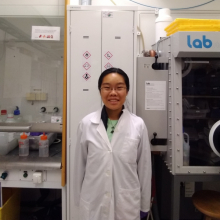
University:
Major:
Site Abroad:
Mentor(s):
Faculty Sponsor(s):
Faculty Sponsor's Department:
Project Title:
Project Description:
In this project, hemicellulose/cellulose composite membranes were investigated as a potential polymer electrolyte for zinc batteries. Batteries contain two electrodes with a separator and electrolyte in between. The separator prevents the electrodes from touching, which also prevents the battery from discharging and stores chemical potential energy. Zinc batteries (Zn-batteries) are an environmentally friendly alternative to lithium batteries because of the higher natural abundance and lower cost of zinc. However, certain limitations prevent widespread use of rechargeable zinc batteries. Cellulose and hemicellulose, two polymers found in wood, can be combined in a separator membrane to prevent unwanted processes from occurring in Zn-batteries and increase their rechargeable lifetime. Different types of cellulose and hemicellulose were combined in various ratios to make a set of membrane samples. The zeta potential and ionic conductivity were measured to evaluate the conductive properties of the membranes. The mechanical properties were tested by determining the tensile strength of each membrane. The electrical resistance and Coulombic efficiency of the samples were evaluated by cycling tests in coin cells. The water absorption capacity was measured to determine the optimal amount of electrolyte for use in a battery. Future work could involve a systematic study of how the amount of electrolyte affects ionic conductivity and tensile strength of the polymer membranes.
